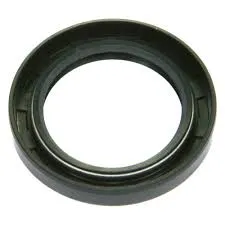10 月 . 17, 2024 10:19 Back to list
oil seal 20x32x6
Understanding Oil Seals The 20x32x6 Specification
Oil seals are crucial components in various mechanical systems, playing a pivotal role in the overall functionality and reliability of machinery. Among the myriad of oil seal specifications available in the market, the 20x32x6 oil seal holds significant relevance in numerous applications. In this article, we will delve into its specifications, applications, manufacturing materials, installation practices, and maintenance considerations.
Specifications of 20x32x6 Oil Seal
The numbers in the designation 20x32x6 refer to the dimensions of the oil seal. Specifically, the first number (20 mm) represents the inner diameter, the second (32 mm) signifies the outer diameter, and the last number (6 mm) indicates the thickness of the seal. This particular size is popular in many industrial applications due to its compatibility with various shafts and housings. Knowing these dimensions is critical when selecting the right seal for your machinery, as improper sizing can lead to leaks and premature wear.
Applications of 20x32x6 Oil Seal
The 20x32x6 oil seal is commonly used in applications where a tight seal against oil and other lubricants is essential. It is found in automotive engineering, where it helps prevent oil leaks in engines and gearboxes. Additionally, this oil seal is utilized in industrial machinery, pumps, and HVAC systems. These seals effectively retain lubricants while preventing contaminants like dust and dirt from entering critical areas, thereby extending the life of components.
Manufacturing Materials
Oil seals are crafted from various materials, each tailored to meet specific operational needs. The most common materials include rubber compounds, polyurethane, and silicone.
1. Nitrile Rubber (Buna-N) This is the most widely used material for oil seals due to its excellent resistance to petroleum-based oils and moderate temperatures. Nitrile rubber is versatile and can withstand a broad range of environments. 2. Fluoroelastomer (Viton) For applications involving aggressive chemicals and high temperatures, fluoroelastomer is often employed. This material offers superior resistance to heat and chemical breakdown, making it suitable for severe conditions.
3. Polyurethane Known for its longevity and excellent wear resistance, polyurethane is used in applications where durability is a priority.
4. Silicone Silicone oil seals provide outstanding temperature resistance and flexibility, making them ideal for applications that experience significant thermal shifts.
oil seal 20x32x6

Choosing the right material for the 20x32x6 oil seal is essential, as it significantly impacts performance and longevity.
Installation Practices
Installing an oil seal properly is critical to ensuring its effectiveness and longevity. Here are some steps to consider during installation
1. Cleanliness Ensure the installation area is free from debris and contaminants. A clean surface helps the oil seal fit snugly and reduces the risk of premature failure.
2. Alignment The seal must be aligned properly with the shaft and housing. Misalignment can cause damage to the seal lip, leading to leaks.
3. Use Proper Tools Employ the right tools, such as seal drivers or installation sleeves, to avoid damaging the seal during installation.
4. Lubrication Applying a thin film of oil to the sealing lip can help reduce friction and ease the installation process.
Maintenance Considerations
While oil seals are designed for durability, regular checks and maintenance are vital for optimal performance. Inspect the seals periodically for signs of wear, such as cracks or deformation. Moreover, ensuring that the working environment does not expose the seals to incompatible chemicals will prolong their lifespan.
In conclusion, the 20x32x6 oil seal is a fundamental component in various mechanical applications, designed to prevent leaks and protect internal components from dirt and contaminants. Understanding its specifications, applications, manufacturing materials, and proper installation techniques is crucial for anyone involved in machinery maintenance or repair. Investing time in selecting the right seal and adhering to proper installation and maintenance practices will ultimately enhance the reliability and efficiency of mechanical systems.